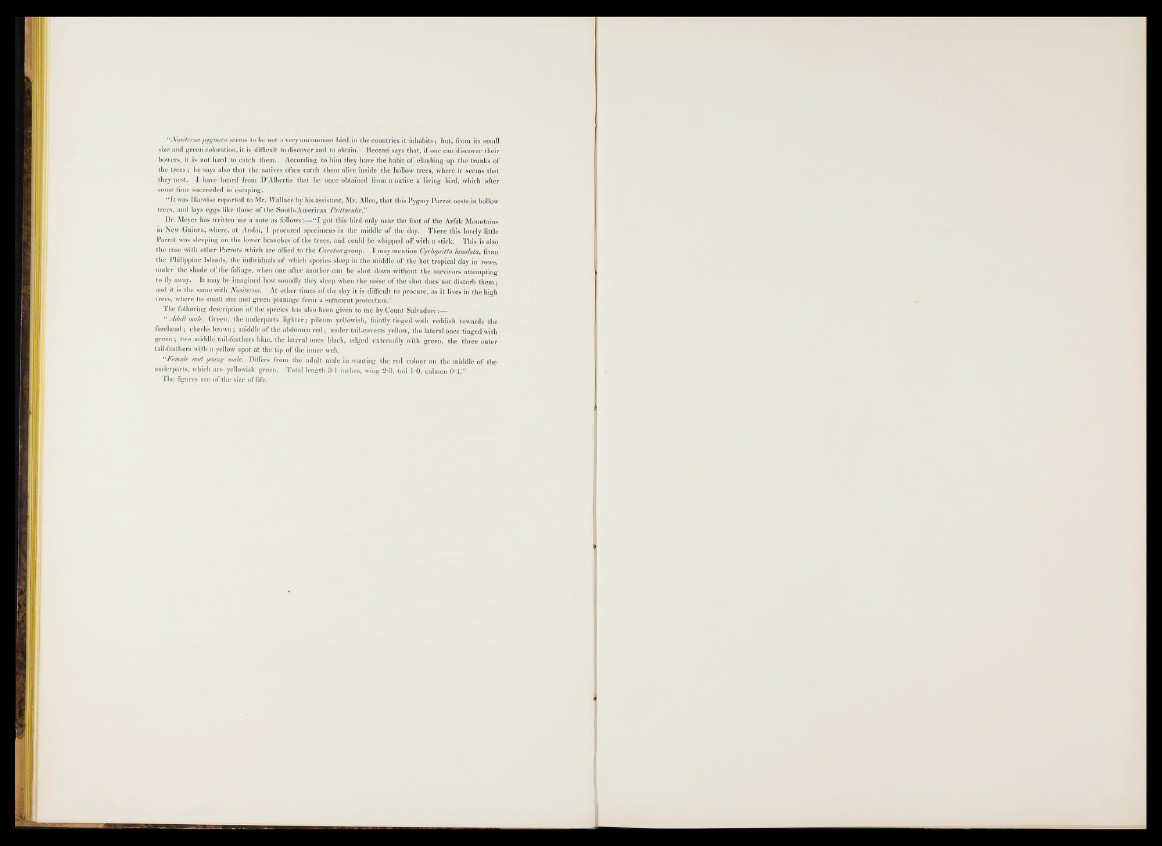
“Nasiterna pygmeea seems to be not a very uncommon bird in the countries it in habits; but, from its small
size and green coloration, it is difficult to discover and to obtain. Beccari says that, if one can discover their
bowers, it is not hard to catch them. According to him they have the habit o f climbing up the trunks of
the tre e s ; he says also that the natives often catch them alive inside the hollow trees, where it seems that
they nest. I have beard from D ’Albertis that he once obtained from a native a living bird, which after
some time succeeded in escaping.
“ It was likewise reported to Mr. Wallace by his assistant, Mr. Allen, th at this Pygmy Parrot nests in hollow
trees, and lays eggs like those o f the South-American Psitlaculee.”
Dr. Meyer has written me a note as follows:— “ I got this bird only near the foot o f the Arfak Mountains
in New Guinea, where, at Andai, I procured specimens in the middle o f the day. There this lovely little
Parro t was sleeping on the lower branches of the trees, and could be whipped off with a stick. This is also
the case with other Parrots which are allied to the Cacatrn group. I may mention Cyclopsitta lunulata, from
the Philippine Islauds, the individuals o f which species sleep in the middle o f the hot tropical day in rows,
under the shade o f the foliage, when one after another can be shot down without the survivors attempting
to fly away. It may be imagined how soundly they sleep when the noise o f the shot does not disturb th em ;
and it is the same with Nasiterna. At other times of the day it is difficult to procure, as it lives in the high
trees, where its small size and green plumage form a sufficient protection.”
The following description o f the species has also been given to me by Count Salvadori:—
“ Adult male. Green, the underparts lig h ter; pileum yellowish, faintly tinged with reddish towards the
forehead ; cheeks brown; middle o f the abdomen r e d ; under tail-coverts yellow, the lateral ones tinged with
g r e e n ; two middle tail-feathers blue, the lateral ones black, edged externally with green, the three outer
tail-feathers with a yellow spot at the tip o f the inner web.
“Female and young male. Differs from the adult male in wanting the red colour on the middle o f the
underpiarts, which are yellowish green. Total length 3 1 inches, wing 2 3, tail 1*0, culmen 0-4.”
The figures are o f the size o f life.